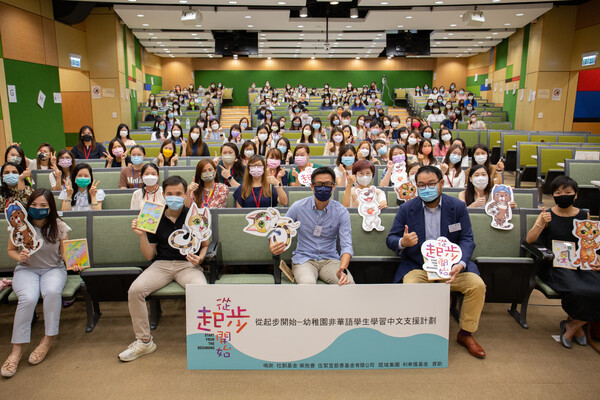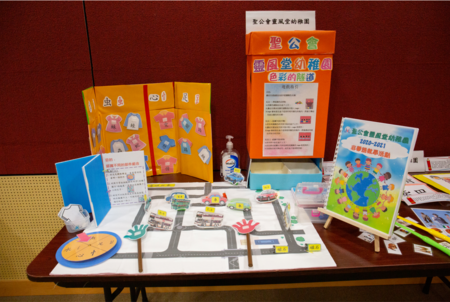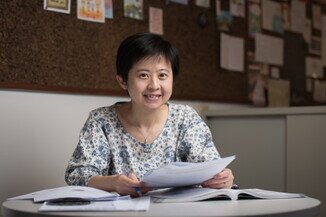A Boost for Non-Chinese Speaking Preschoolers
Ethnic minority families in Hong Kong, especially those of South Asian origin, live disproportionately in poverty. Whereas about 15 percent of the general population is classified as living in poverty, the rate is about one-third for ethnic minority families with young children. A key factor is their lack of access to better-paying jobs due to inadequate Chinese-language abilities. That reality is the motivation behind a project that targets the youngest non-Chinese speaking (NCS) students in order to give them a better start in life.
The “Start from the Beginning – Chinese Supporting Scheme for Non-Chinese Speaking Students in Kindergarten” project builds on several years of work by Dr Loh Ka Yee, Elizabeth, Assistant Dean (Knowledge Exchange) and her collaborator Dr To-Chan Sing Pui, Tikky of The Education University of Hong Kong. The project was recently awarded HK$26 million as the first recipient in Hong Kong of the Pay-for-Success fund (in which funders provide money for social programmes and are reimbursed by the government if targets are met or exceeded), as well as HK$13 million from the Bank of China (Hong Kong) Centenary Charity Programme.
“When NCS children enter kindergarten, they are already three years behind their native-speaking counterparts,” Dr Loh said. “But teachers are not trained in teaching Chinese as a second language and they don’t have curriculum, teaching materials or pedagogies for this. There are also cultural differences that they need to be aware of.”
“If we don’t do something to support NCS children and their teachers, the gap will get bigger and bigger until, in some sense, the children will give up.”
Dr Loh and Dr To-Chan have been well-placed to take up that challenge – Dr Loh has a background in developing NCS curriculum and training materials for primary and secondary schools, while Dr To-Chan is an expert in early childhood education.
Joining forces to work with six seed schools in 2015, they have been developing curriculum and teaching materials that integrate Chinese as a second language into the thematic learning that characterises kindergarten learning. Games and play, gestures, culturally responsive storybooks, rhymes and songs are promoted to help children learn meaning through the whole language method. The rhymes and songs are devised by the team to match Cantonese tones with melodies so that children’s learning can be transferable to daily communication with native Chinese speakers. Over the past six years, the scheme has already been implemented in over 40 schools, with support from Oxfam Hong Kong and funding from the Social Innovation and Entrepreneurship Development Fund, Credit Suisse, Lee Hysan Foundation, Wu Jieh Yee Charitable Foundation Limited, Stan Group, The Chen Yet-Sen Family Foundation and Van Tse Zung Charity Foundation.
A Dynamic Enrichment Learning Mode has also been adopted to involve both small group and individual learning. For small group learning, the children get 30-minute sessions twice a week, while they get 30 minutes every two weeks for individual learning.
Alongside that programme, teachers are provided with training, feedback, and exchange seminars so that they can learn from one another. Workshops are also organised to make the teachers aware of key issues for NCS learners – in particular, the difference in language systems (ideographic versus alphabetic), the lack of a Chinese language environment to support children at home, as well as the need to realise that these children start with little or no Chinese and require patience from teachers as they come to grips with a new language.
The team has also developed an assessment tool for assessing NCS students’ Chinese language abilities. The combined scores of the assessment tool indicate that the Chinese proficiency for NCS students in the programme has significantly improved. Results from 2017 show K1 students went from a pre-test score of 14.35 to 30.18 after one year in the NCS programme. K2 students went from 16.92 to 66.86, and K3 students went from 47.47 to 93.89. “This would not have happened without the continuous support from our funders and our team’s collective effort”, suggested Dr Loh.
Most importantly, the gap between NCS and native Chinese-speaking students was narrowed. At K1, the difference was halved, from 1.69 before intervention to 0.83 after. At K2, it fell 66 percent from 0.86 to 0.29. And at K3, it fell 41 percent from 1.56 to 0.92.
“NCS students not only need good Chinese language proficiency, they need to perform as well as their Chinese counterparts,” Dr Loh said. “The government wants them to study in mainstream Chinese schools, so they need to be able to cope with Chinese as a language of instruction – the bar is much higher than just learning the Chinese language itself.”
Teachers on the ground have also provided anecdotal stories of success. Primary school teachers told the team that the NCS children who went through the kindergarten programme were competent in Chinese language and that they now saw the potential of these students given the right pedagogy and support. A school using Chinese as the medium of instruction even reported that a young graduate of the programme came first in Chinese in his class. Parents also reported that their children are more willing to use Chinese to communicate with their neighbours after attending the enrichment classes.
Dr To-Chan said that the new phase of the project, which will reach nearly 100 schools by 2023, will place a lot of emphasis on a train-the-trainer approach and developing and publishing teaching materials and guides. “By the time we finish, we are confident that our seed and network teachers will be able to further disseminate this method and curriculum to other schools with NCS children.” Currently, about 500 kindergartens admit NCS students in Hong Kong.
Dr Loh added that they would also lobby the government for professional recognition of Chinese as a second language teachers, much as there is for English as a second language teachers. “Teaching NCS students is much more difficult than teaching native speakers. Their expertise and experience should be recognised, otherwise we can’t retain these teachers,” she explained.
Dr Loh Ka Yee, Elizabeth (far left) collaborated with Dr To-Chan Sing Pui, Tikky (fourth from right) in a project to help non-Chinese speaking kindergarten students learn Chinese.

From left) Ms Janny Lau, Project Manager of Lee Hysan Foundation; Mr Kwok Man Lung, Greg, Senior Management Services Officer, Innovation and Technology Bureau, Hong Kong SAR Government; Mr Alan Lo, Chief Consultant of Social and Innovation Entrepreneurship Development Fund Task Force Secretariat, Hong Kong SAR Government; Mr Jason Wu, Director of Wu Jieh Yee Charitable Foundation Limited and Ms Wong Shek Hung, Acting Director of Hong Kong, Macau, Taiwan Programme at Oxfam Hong Kong, attended a sharing session organised in July 2021 for participating schools to share their experience, outcomes and gains from the project.
.jpg)
A Dynamic Enrichment Learning Mode has been adopted that entails both small group and individual learning.

Teaching materials developed by parcipating schools to facilitate Chinese learning by non-Chinese Speaking students in kintergartens.

